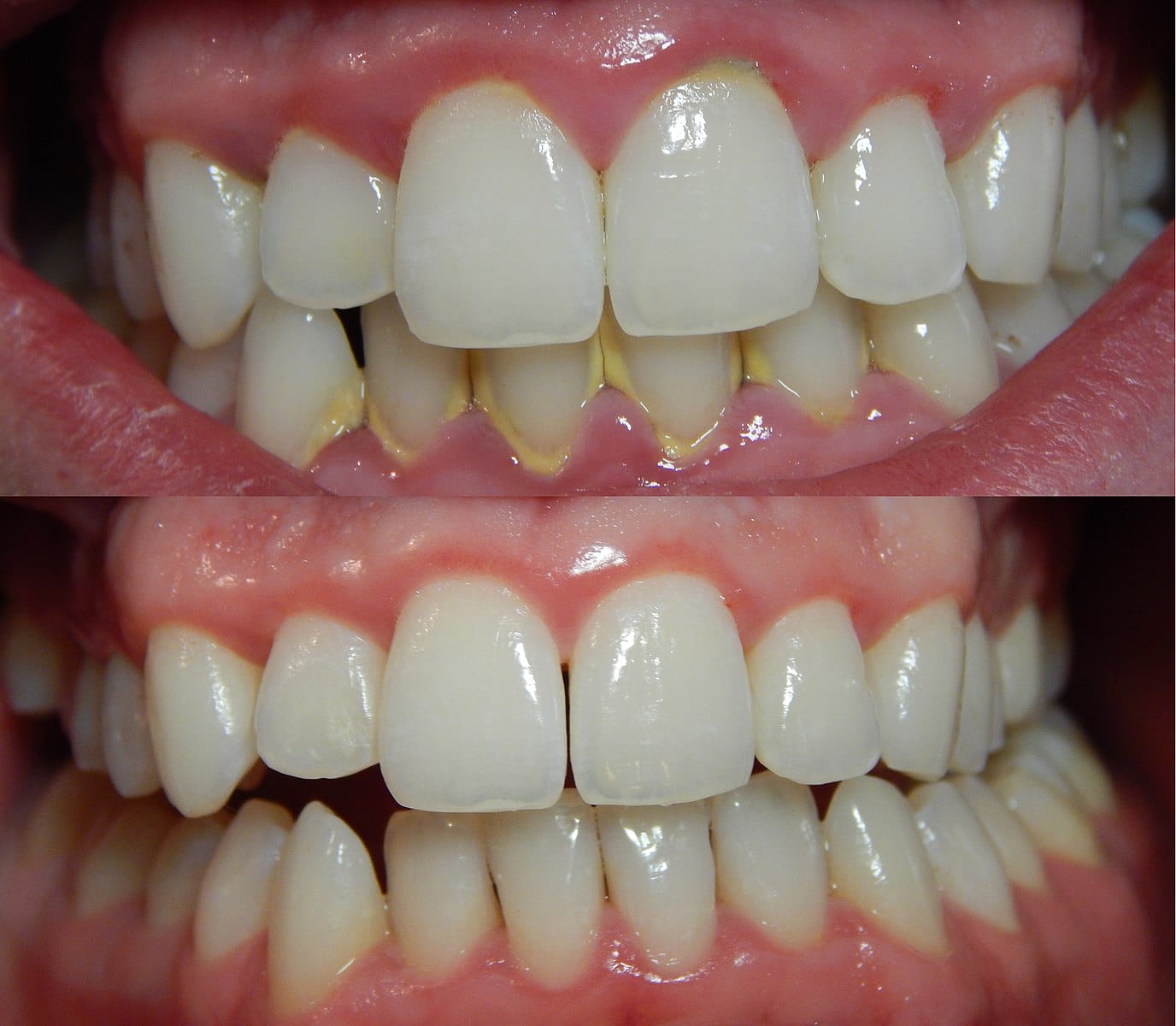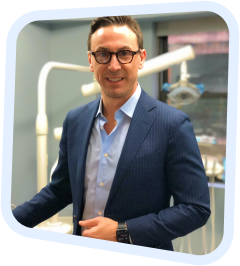Gum disease is very common. In fact, half the adult population has some stage of it. With something so common, you should always make sure you practice effective oral hygiene regularly to help prevent it. Still, if you’re worried that you may have gum disease, then you need to know the signs of early stage gum disease as well as your treatment options.
But you don’t want to wait long, untreated gum disease can progress into something much worse, advanced gum disease or periodontitis…
What Causes Early Stage Gum Disease (Gingivitis)?
The most often cause of gum disease is improper oral hygiene. Gum disease starts with plaque build-up on the teeth. The plaque becomes a breeding ground for bacteria. And as your body attempts to fight off these infections, the immune system attacks the area. This is why bleeding occurs, tenderness, and redness occur.
However, your immune system tends to make things worse. As a result, it can actually break down the surrounding tissues (the bones and periodontal ligaments) holding the teeth in place. Over time, this eventually causes teeth to loosen and fall out. When this happens, your gingivitis will have transitioned into periodontitis (gum disease).
There are many other causes of gum disease as well:
- Genetics can play a role with some people having a family history of gingivitis and advanced gum disease.
- Hormonal changes can make your gums more sensitive and make it easier for gum disease to spread (i.e., pregnancy, menopause, menstruation, and puberty).
- Illnesses like HIV, Cancer, and Diabetes can affect gum tissue by compromising your immune system and encouraging infections, like gingivitis to occur.
- Medications can reduce salvia or increase gum growth, causing gingivitis.
- Smoking can damage gum tissue, making it easier for infections to spread.

What Are The Types of Gum Disease
There are two forms of gingivitis: chronic and acute. Chronic gingivitis comes from the biofilm (plaque) that covers the teeth and causes inflammation. Acute gingivitis usually comes from specific infections or trauma to the gums. In most cases, a professional dental cleaning by your local dentist and proper oral hygiene can help cure patients of gingivitis.
Be Aware of The Symptoms
If you’re worried that you might be experiencing an early stage of gum disease, then you need to speak with your dentist as soon as you can. Here are some of the signs:
- Bad breath
- An off-putting or foul taste in your mouth
- Puffy, red, or swollen gums
- Tender gums that bleed during brushing or flossing
- Gums that look like they’re moving away from your teeth
- Teeth that appear longer
- Changes in your bite
- More severely, pus seeping out of your gums and teeth
Remember, gum disease is common, so there’s no need to feel worried or embarrassed. If you see any of these signs, book an appointment with your local dentist quickly so they can get you treated for gingivitis.
What Are My Treatment Options for Gingivitis?
In most cases, simply brushing your teeth better, using mouthwash, flossing regularly, and having your teeth professional cleaned by a dentist is enough to stop the spread of gum disease. During a visit to your local dentist, your health care professional will go over proper oral hygiene tactics you can use to combat gingivitis. And often, your gums will heal quickly.
It’s important to see your dentist soon if you suspect signs of gum disease/gingivitis. If you don’t, the plaque on your teeth can harden into tartar. Tartar makes things much worse. Not only is it very hard to remove on your own, but it provides a protected environment for bacteria to rapidly grow and break down the bone and gum surrounding your teeth. This is known as advanced gum disease.
Treat Advanced Gum Disease with a LANAP® Procedure
Advanced Gum Disease, can wreak havoc on your teeth, gums, and even your jaw. It’s not uncommon for untreated periodontitis to cause teeth to loosen and fall out. Sadly, once gingivitis has advanced to periodontitis, you’ll need to seek help from a trained dental practitioner. But luckily, a simple LANAP® procedure can help restore your oral health.
LANAP® is your best option when it comes to treating advanced gum disease. During a LANAP® procedure, your trained dentist or periodontist will first clean your teeth, then use a special type of laser that destroys the bad bacteria. You’ll experience relatively low discomfort and a quick recovery.






